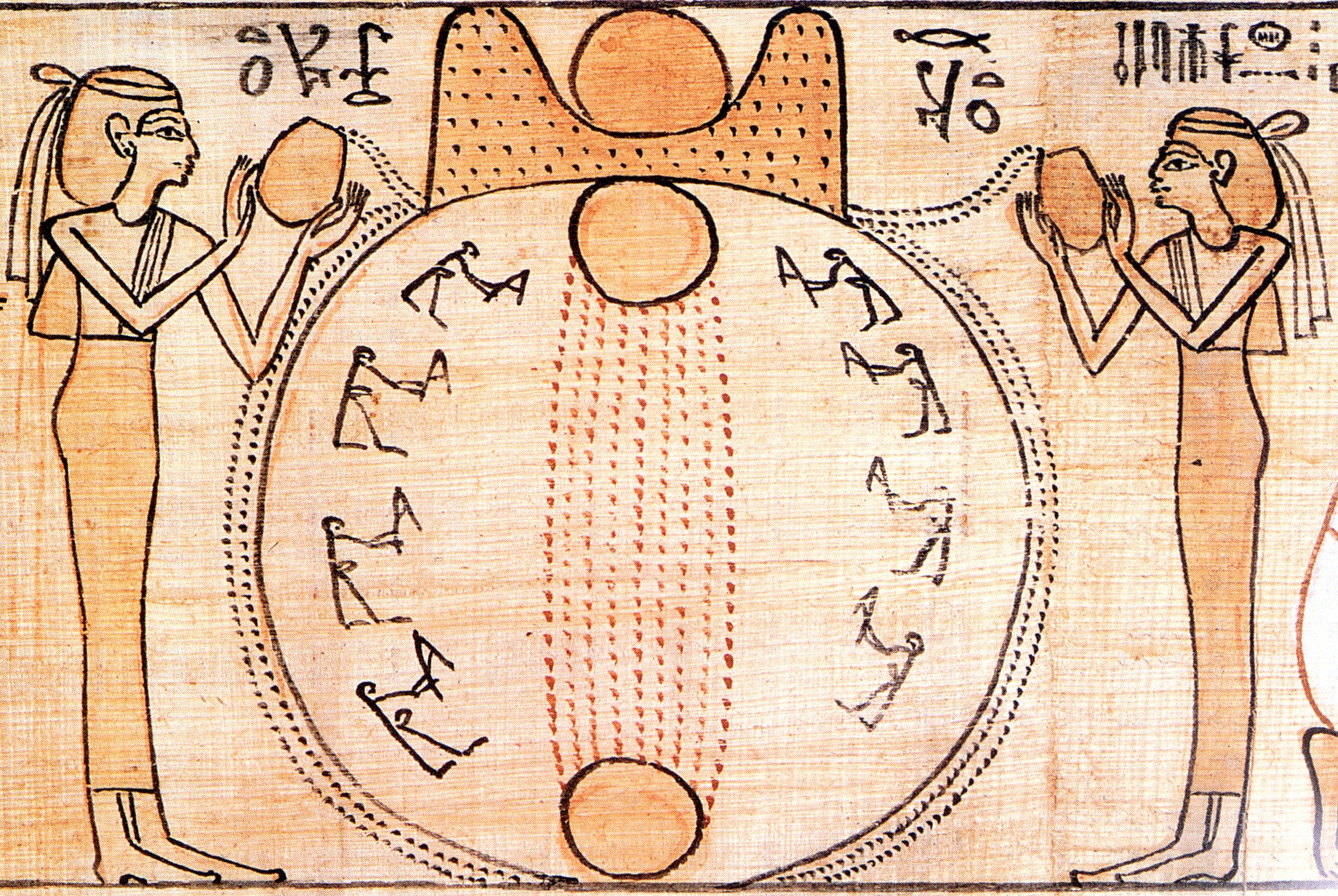
Ancient Egyptian creation myths
Ancient Egyptian creation myths are the ancient Egyptian accounts of the creation of the world. The Pyramid Texts, tomb wall decorations, and writings, dating back to the Old Kingdom (c. 2700–2200 BCE) have provided the majority of information regarding ancient Egyptian creation myths.[1] These myths also form the earliest recorded religious compilations in the world.[2] The ancient Egyptians had many creator gods and associated legends. Thus, the world or more specifically Egypt was created in diverse ways according to different parts of ancient Egypt.[3] Some versions of the myth indicate spitting, others masturbation, as the act of creation. The earliest god, Ra and/or Atum (both being creator/sun gods), emerged from a chaotic state of the world and gave rise to Shu (air) and Tefnut (moisture), from whose union came Geb (earth) and Nut (sky), who in turn created Osiris, Isis, Set, and Nephthys. An extension to this basic framework was the Osiris myth involving Osiris, his consort Isis, and their son Horus. The murder of Osiris by Set, and the resulting struggle for power, won by Horus, provided a powerful narrative linking the ancient Egyptian ideology of kingship with the creation of the cosmos.
In all of these myths, the world was said to have emerged from an infinite, lifeless sea when the sun rose for the first time, in a distant period known as zp tpj (sometimes transcribed as Zep Tepi), "the first occasion".[4] Different myths attributed the creation to different gods: the set of eight primordial deities called the Ogdoad, the contemplative deity Ptah, and the mysterious, transcendent god Amun. While these differing cosmogonies competed to some extent, in other ways they were complementary, as different aspects of the Egyptian understanding of creation.